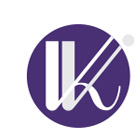 |
 |
 |
 |
 |
 |
 |
 |
 |
 |
||||||||||||||||||||||||||||||||||||
| News | Industries | Tech Support | Sustainability | Laboratory | Brochures | FAQs | Contact Us | ||||||||||||||||||||||||||||||||||||||
K.J. Filtration Technologies Ltd. |
|||||||||||||||||||||||||||||||||||||||||||||
Copyright © 2015 K.J. Filtration Technologies Ltd. All rights reserved. |
|||||||||||||||||||||||||||||||||||||||||||||
 |
 |
 |
 |
 |
 |
 |
 |
 |
 |
||||||||||||||||||||||||||||||||||||
| News | Industries | Tech Support | Sustainability | Laboratory | Brochures | FAQs | Contact Us | ||||||||||||||||||||||||||||||||||||||
K.J. Filtration Technologies Ltd. |
|||||||||||||||||||||||||||||||||||||||||||||
Copyright © 2015 K.J. Filtration Technologies Ltd. All rights reserved. |
|||||||||||||||||||||||||||||||||||||||||||||